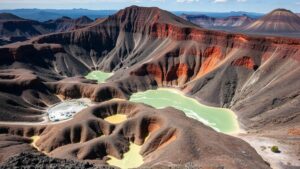Advanced Stream Sediment Analysis for Alluvial Gold Recovery
Advanced Stream Sediment Analysis for Alluvial Gold Recovery
Alluvial gold recovery is a significant facet of the mining industry, particularly for small-scale and artisanal miners. Understanding the intricacies of stream sediment analysis can dramatically enhance the efficiency and yield of gold recovery operations. This article delves into the methodologies, technologies, and best practices associated with advanced stream sediment analysis, aiming to equip practitioners with the necessary knowledge for effective alluvial mining.
Understanding Alluvial Gold Deposits
Alluvial gold occurs in riverbeds and stream sediments, formed through the weathering and erosion of primary gold deposits. movement of water helps transport gold particles, often leading to concentration in areas with reduced flow velocity. To harness this gold, miners must utilize sophisticated sediment analyses to identify optimal extraction zones.
Importance of Stream Sediment Analysis
Stream sediment analysis serves to identify mineral content and distribution, which is crucial for successful gold recovery operations. Key reasons for conducting this analysis include:
- Assessing the viability of potential mining locations.
- Determining gold particle size and distribution ratios.
- Identifying associated minerals that may aid or hinder gold recovery.
Methodologies in Stream Sediment Analysis
Sample Collection
The first step in advanced stream sediment analysis is effective sample collection. Collectors should focus on areas where gold is likely to accumulate, such as:
- Inside bends of rivers.
- Downstream from large boulders.
- In pools or behind riffles.
Collecting a varied sample from multiple locations ensures a comprehensive analysis, improving the reliability of results.
Laboratory Analysis Techniques
Once samples are collected, they undergo several laboratory techniques for analysis, including:
- Pan Concentration: A simple and effective method used to separate gold from sediment based on density.
- Bulk Sampling: This involves processing larger volumes of sediment to improve the accuracy of gold recovery estimates.
- Geochemical Analysis: Techniques such as Inductively Coupled Plasma Mass Spectrometry (ICP-MS) identify trace metals and evaluate their concentrations within samples.
Each technique is selected based on the specific requirements and resources available to the mining operation.
Technological Innovations
Remote Sensing and GIS
Modern advancements in remote sensing technology and Geographic Information Systems (GIS) have transformed how miners assess potential gold deposits. These tools enable large-scale analyses, using satellite imagery and topographical data to identify favorable geological formations.
For example, a study in the Amazon used satellite remote sensing to successfully map and model alluvial gold deposits across extensive areas, which helped to streamline exploratory drilling and sampling efforts.
Data Mining and Statistical Analysis
Integrating statistical analysis with sediment data allows for the application of predictive models to ascertain likely gold concentration areas. By employing machine learning algorithms, miners can analyze historical data to identify trends and optimize their exploration strategies.
A notable case involved the use of predictive modeling to assess the likelihood of finding gold deposits based on previous sediment analysis data, ultimately improving the efficiency of extraction processes.
Case Studies: Successful Useation
Case Study 1: The Kibi Goldfields, Ghana
In the Kibi Goldfields of Ghana, a systematic approach combining stream sediment analysis, geological mapping, and GIS was employed to locate and extract alluvial gold. Researchers collected sediment samples from various river channels and conducted extensive geochemical testing. The outcome yielded several high-potential sites, contributing to a significant increase in gold production in the region.
Case Study 2: The Yukon River, Canada
Another compelling example comes from the Yukon River in Canada, where sediment analysis was pursued rigorously. The combination of remote sensing and on-site sediment sampling revealed previously unknown alluvial deposits. Advanced statistical techniques then helped prioritize extraction efforts, resulting in a notable boost in recovery rates.
Conclusion and Actionable Takeaways
Advanced stream sediment analysis is an invaluable component of alluvial gold recovery that can enhance operational effectiveness and maximize yields. Miners can significantly improve their success rates by employing robust sampling methodologies, utilizing modern technological tools, and leveraging data-driven decision-making processes.
To summarize:
- Conduct thorough and strategic sediment sampling.
- Use advanced laboratory techniques for accurate analysis.
- Integrate remote sensing, GIS, and statistical tools into exploration efforts.
- Learn from successful case studies to refine methodologies.
By adhering to these principles, miners can navigate the complexities of alluvial gold recovery with greater assurance and profitability.

